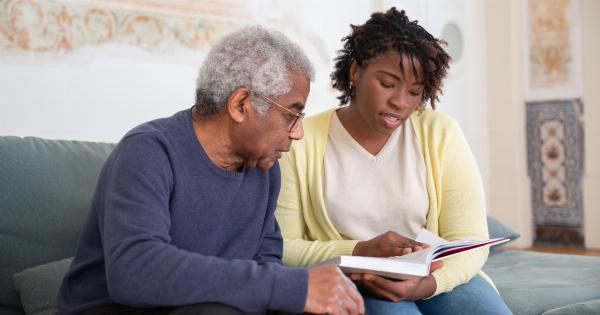Bullying is a widespread issue that affects individuals of all ages, genders, and backgrounds. It can occur in various settings, such as schools, workplaces, or even online platforms.
Recognizing the signs of bullying is crucial in order to intervene and provide support to those who are being targeted. In this article, we will explore the different forms of bullying and discuss the indicators that can help identify if someone is being bullied.
Types of Bullying
Bullying can manifest in several forms, including:.
- Verbal Bullying: This involves using words to insult, humiliate, or degrade a person. It often includes name-calling, teasing, or mocking.
- Physical Bullying: Physical bullying involves the use of physical force or aggression to harm or intimidate someone. This may include hitting, kicking, pushing, or damaging personal property.
- Relational Bullying: Also known as social bullying, this form of bullying aims to damage someone’s reputation or relationships. It includes spreading rumors, social exclusion, or manipulating social situations to isolate an individual.
- Cyberbullying: With the rise of technology, bullying has extended to the digital realm. Cyberbullying involves using electronic devices and online platforms to harass, threaten, or embarrass someone. This can occur through text messages, social media, or online forums.
Recognizing the Signs of Bullying
Identifying the signs of bullying can sometimes be challenging, as individuals who are being bullied may try to hide their experiences out of fear or shame. However, there are some common indicators that can help unveil potential instances of bullying.
These signs include:.
- Changes in behavior: A person who is being bullied may exhibit sudden changes in behavior. They might become withdrawn, anxious, or exhibit signs of depression. They may also seem more irritable or have trouble sleeping.
- Physical signs: Physical symptoms can manifest in individuals who are being bullied, such as unexplained bruises, cuts, or other injuries. They may also develop frequent headaches or stomachaches.
- Loss of interest: A person who is being bullied may lose interest in activities they used to enjoy. They may stop participating in social events or isolating themselves from friends and family.
- Declining academic performance: Bullying can significantly impact a person’s ability to concentrate and perform well academically. They may experience a decline in grades or become disengaged from schoolwork.
- Changes in eating habits: Bullying can affect an individual’s appetite. They may experience a loss of appetite, leading to weight loss, or resort to overeating as a coping mechanism.
- Low self-esteem: Bullying erodes an individual’s self-confidence and self-worth. They may express feelings of worthlessness or have a negative self-image.
- Unexplained possessions: Bullying may involve theft or damage to personal belongings. If someone frequently loses possessions or comes home with damaged items without a reasonable explanation, it could be a sign of bullying.
- Avoidance of specific places: A person being bullied might try to avoid specific areas where the bullying occurs, such as certain hallways, classrooms, or even entire locations like school or work.
- Social difficulties: Bullying can lead to difficulties in forming and maintaining healthy relationships. Individuals may struggle with making friends or experience changes in their social circle.
- Emotional distress: Bullying takes a toll on an individual’s emotional well-being. They may display signs of sadness, anger, or fear, and may even talk about self-harm or suicide.
Taking Action Against Bullying
Recognizing the signs of bullying is the first step towards taking action and providing support to those who are being targeted. If you suspect someone is being bullied, it is important to:.
- Initiate conversation: Approach the person calmly and express concern for their well-being. Create a safe space where they feel comfortable opening up about their experiences.
- Listen actively: Let the person share their experiences without judgment. Provide a supportive and empathetic ear, allowing them to express their feelings and emotions.
- Assure confidentiality: Make sure the person understands that their privacy and confidentiality will be respected. This can help build trust and encourage them to disclose the details of the bullying.
- Encourage documentation: Advise the person to maintain a record of bullying incidents, including dates, times, locations, and details of what occurred. This documentation can be helpful if further action needs to be taken.
- Report the bullying: If the person is comfortable, help them report the bullying to the appropriate authorities. This could be a school counselor, teacher, supervisor, or the relevant online platform if it is cyberbullying.
- Involve parents or guardians: If the person being bullied is a minor, notify their parents or guardians about the situation. Ensure open communication between all parties to collectively address the issue.
- Seek professional help: In severe cases or situations where the person being bullied is experiencing significant psychological distress, it is crucial to involve mental health professionals who can provide appropriate guidance and support.
- Teach coping mechanisms: Encourage the person to develop healthy coping mechanisms to deal with the effects of bullying. This can include practices such as relaxation techniques, positive visualization, or engaging in activities they find enjoyable.
- Promote awareness and prevention: Educate others about the signs and effects of bullying. Raise awareness in your community, workplace, or school to foster a safe and inclusive environment for all individuals.
- Provide ongoing support: Offer continued support to the person who has experienced bullying. Check in with them regularly, and let them know they have a trusted ally who will provide assistance whenever needed.
Conclusion
Bullying is a serious issue with detrimental effects on an individual’s mental, emotional, and physical well-being. Recognizing the signs of bullying plays a crucial role in creating a safe environment and providing support to those who need it.
By familiarizing ourselves with the different types of bullying and paying attention to the indicators discussed in this article, we can take important steps towards eradicating bullying and promoting a more compassionate and inclusive society.





























